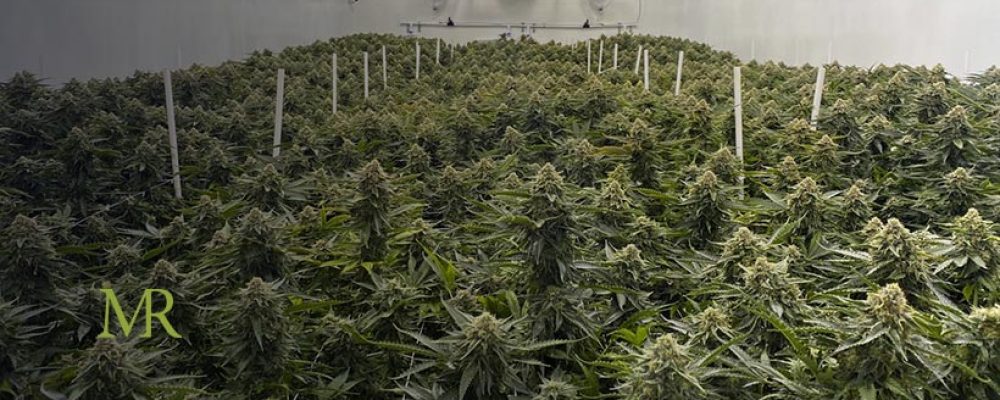As cannabis cultivators continue to establish and expand across the US, more and more are looking to automate practically every aspect of the production process.
From automated irrigation systems, conveyors, climate controls and nutrient dispensers, the potential benefits are clear.
Among them, reduced water usage, lower labor costs, fewer menial tasks, and more efficient applications of nutrients and light means a cannabis cultivator is in a stronger position to scale their operation and maximize revenues.
But automation involves significant upfront costs, and not every automation process or technique will necessarily deliver a sufficient return on investment (ROI) to justify these.
Before investing in automation, it’s therefore crucial to weigh up the costs against the expected benefits. Here are some of the key factors to consider.
Reducing Demands on Labor
Payroll costs are typically one of a business’s biggest expenses. For cannabis cultivators dependent on workers to perform repetitive tasks like watering plants and applying nutrients, this is undoubtedly the case.
So, introducing automated equipment that can take over plant irrigation and spraying has the potential to yield huge savings, which increase in line with the size of the grow site.
Christina Lake Cannabis Corp. (CLC) grows 25,000 marijuana plants outdoors in British Columbia and it decided early on that manual irrigation simply wasn’t practical for its size. After assessing the costs of investing in automation technology, the company concluded it would quickly pay for itself compared to the costs and difficulties of hiring and managing a huge workforce.
“Since day one, we realized that, for the scale of our project, there was no way we could do it without automation,” said Nicco Deehan, CLC’s master grower. “Our irrigation system is fully automated, so one person can run the irrigation for 25,000 plants. Whereas, if you were doing it manually, it’d be hard for a grower to [water] much more than 500 plants in a day, so you’d need 30 to 50 people out there hand-watering. It would be a nightmare.”
CLC also employs automation technology to assess plant health and hydration with the help of a $10,000 infrared drone alongside a monthly software subscription of $250. Not only does it alert staff to under or over-watered plants, it can also identify chlorophyll levels, growth progress and signs of stress so that workers can then quickly intervene in a targeted manner before the issue becomes too serious.
“If we had to have people out in the field, walking row to row, checking every individual plant, it would be a massive amount of manpower—and it would be very difficult to staff that,” said Deehan.
CLC now manages its 20 acre grow site with just five growers and 10 seasonal workers, whom Deehan says are able to instead focus on more fulfilling tasks that add further value to the business.
“You’re gaining the ability to use those people in more important areas,” Deehan said. “Anything I can do to move quality people up the line so they’re handling more volume and more responsibility [increases their value]. It also helps that person’s morale and outlook tremendously because it helps them realize this is a career.”
Achieving Unparalleled Consistency
Not only can automation reduce demands on labor and enable staff to work on other important tasks, the technology can achieve a level of consistency and precision appreciated by plants that manual labor simply can’t match.
“If you have 20 different people watering your plants, regardless of how well-trained they are, you have 20 different results. Some plants are going to get too little water, some too much, and both of those affect yields, so now you have variability within your product,” said Andrew Lange, president of Ascendant Management, a consultancy firm that has advised on automation processes across more than 2 million square feet of indoor cannabis grow sites. “A computer uses empirical data, so it knows when to water things exactly—and it never quits, gets sick, or takes the day off.”
Precise applications of water and nutrients means improved plant health, larger yields and a better final product, all while minimizing the waste of water and nutrients that the plant fails to absorb under traditional “spray and pray” techniques.
Determining the Impact of Automation
Potential labor savings and increased efficiencies need to be weighed against the costs of automation.
To do this, growers must analyze how the introduction of a new technology will affect the production process in its entirety.
Related content: Finding the best employees for your cannabis cultivation site
Drawing up financial projections is one aspect of this, but it’s also crucial to assess the technology in action and whether it makes sense for your cannabis cultivation site.
“Do a lot of research,” Lange said. “Spend your time doing demos and visiting other facilities that run that equipment. Talk to the people who run it and make sure that the process will work for you—or that you can change your process to work for the automation. Otherwise, it’s a waste of money.”
An automated seeder, for instance, may reap big time savings around planting season, but then lie dormant for the rest of the year even though it was perhaps designed, and costed, to plant hundreds of thousands of seeds every week. So, if your grow site isn’t set up to plant seeds continuously throughout the year, you probably won’t see a good enough ROI on such equipment.
It’s also important to align each stage of the production process to avoid bottlenecks and wastage. What’s the point in huge yields, after all, if your cultivation site is unable to process or distribute it?
Automate or Die
The purpose of automation is to bring down production costs and boost margins. In the increasingly competitive cannabis cultivation space, both legal and illicit, businesses need to automate to survive and they need to do it smartly.
This means cannabis cultivators need to track the ROI of automation, rather than blindly expecting big investments to yield big returns.
“By involving automation, we have probably cut down our costs from 2009 by maybe 75% or more,” said Rich Kwesell, co-founder of the vertically-integrated Strawberry Fields dispensaries and cannabis farms in Colorado. “Back then, we weren’t able to calculate our production costs like we are today, but we were probably over $500 to produce a pound in the beginning. Fast-forward to today, and we can get it under $100 if we need to.”
As the cannabis market matures further, marijuana prices will continue to compress, thus increasing the pressure to automate. For Kwesell, it’s important for new growers to take this into account and consider introducing automated production processes as early as possible.
“You’ve got to automate or die,” Kwesell said. “If I could have done it again, hindsight 20/20, I would have taken all these steps to automate sooner. I would have done it as fast as possible. You can drive yourself crazy looking at your analysis on each decision, but if we would have dove in quicker, we would’ve had a much bigger advantage.”


